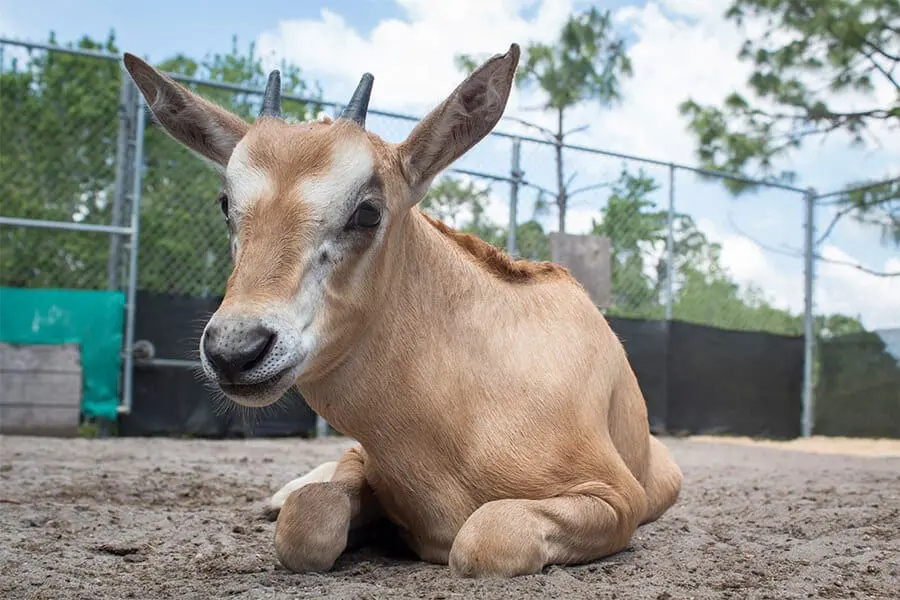

The female calf rests in the company of her human caretakers.
February was an exciting month at the Zoo as we welcomed two newborn scimitar-horned oryx calves—a male born to Danica on the 3rd and a female born to Kitcha on the 28th. After five hours in labor, first-time mom Kitcha didn’t show much interest her newborn, so the little one is being hand-reared by our keepers behind the scenes. (She’s thriving and should rejoin the herd in less than a month.)
The scimitar-horned oryx is a rare species of antelope native to vast desert regions of Northern Africa. They have white coats with unique reddish-brown marks covering their neck and face. Possibly behind the legend of the unicorn, these beauties are most recognizable by their long, rigid horns that grow several feet and curve backwards.
In the wild, scimitar-horned oryx were known to span across the arid ecosystems of Morocco, Tunisia, Algeria, Libya, Egypt, Mauritania, Mali, Niger, Chad and Sudan. The last photo of oryx in the wild was taken in Niger in 1980. Unconfirmed reports stated that a few wild oryx remained in the wilderness of Chad in 1996. No definite evidence of any survival was ever obtained, so in 2000, the scimitar-horned oryx was deemed extinct in the wild. Prolonged drought, desertification and loss of pasture were thought to contribute to the extinction of this species. The primary causes, however, were unregulated hunting and human encroachment on their habitat for agriculture.
Many zoos throughout the world participate in conservation breeding programs. In North America, these programs are regulated by the Association of Zoos and Aquariums (AZA) to produce healthy, genetically viable animals. AZA has partnered with the Environment Agency – Abu Dhabi and the government of Chad to participate in their Scimitar-Horned Oryx Reintroduction Program.
The goal is to release 500 captive-born oryx into the Ouadi Rime-Ouadi Achim Game Reserve. The reserve is a protected piece of land full of their native habitat, where the herd can live and breed in the wild. In March 2016, 25 individuals arrived in Chad—the first time in 30 years any oryx had been in the country. They were released into a large fenced area to get acclimated to the new environment.
Upon arrival, these individuals were fitted with GPS satellite collars. The data collected from these collars will be used to track and protect the animals, gather behavioral data on the species and study their ecology.
In August 2016, the herd was released into the Reserve, which is approximately the size of Scotland. The project has already resulted in the first birth of a scimitar-horned oryx the wild in over 20 years. In February 2017, another 14 individuals joined the herd—six males and eight females.
If this reintroduction program continues to be successful, it could build some momentum moving forward with other organizations to reinforce the power of conservation efforts.